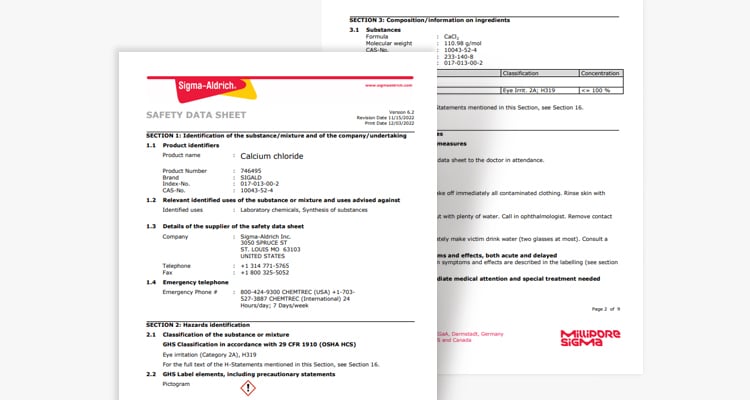Calcium chloride is a chemical compound with the formula CaCl2. It is commonly used in various industries, including construction, food production, and de-icing. While it has many benefits, it can also pose certain safety risks if not handled correctly. In this article, we will explore the uses, health hazards, and essential safety tips for handling and disposing of calcium chloride.
What is Calcium Chloride?
Calcium chloride is a white crystalline solid with a high melting point. It is highly soluble in water and readily absorbs moisture from the air, making it an effective drying agent. It is used in a wide range of industries, including food production, oil and gas, and construction, due to its ability to lower the freezing point of water and increase the melting point of ice.
Common Uses
One of the most common uses of calcium chloride is in de-icing applications. It is often used to melt snow and ice on roads, sidewalks, and parking lots. It is also used in the food industry as a firming agent and to help preserve fruits and vegetables. In the oil and gas industry, it is used to increase the density of drilling fluids and to reduce the formation of scale in pipes and equipment.
Health Hazards Associated with Calcium Chloride
This chemical compound can pose certain health hazards if not handled properly. Exposure to calcium chloride can cause irritation of the skin, eyes, and respiratory system. Prolonged or repeated exposure can lead to the development of dermatitis or other skin conditions. Ingestion or inhalation of calcium chloride can cause gastrointestinal irritation, nausea, vomiting, and other health problems. View the Safety Data Sheet of Calcium Chloride here.
Safety, Handling and First Aid
When working with calcium chloride, it’s important to take necessary safety measures to protect yourself from potential hazards. This includes wearing safety glasses, synthetic apron and gloves to avoid any contact with the chemical. Eyewash stations and washing facilities should also be located in the immediate workspace wherever calcium chloride is used.
In the event of exposure, it’s important to follow proper first aid guidelines:
- Inhalation: Immediately seek fresh air and medical attention.
- Eye Contact: If contact lenses are present, remove them and immediately flush your eyes with plenty of water for at least 15 minutes to prevent damage. Seek medical attention.
- Skin Contact: Flush the affected area with plenty of water, remove contaminated clothing, and wash with soap. Seek medical attention and apply an emollient to any irritated skin.
- Ingestion: Do not induce vomiting and never give anything by mouth to an unconscious person. Seek medical attention immediately if large quantities of calcium chloride are ingested.
By following these safety measures and first aid guidelines, you can ensure a safe workplace environment.
Storing & Disposing
Calcium Chloride should be stored in airtight containers to prevent it from reacting with air and moisture, which can lead to the formation of corrosive acids. It should be disposed of according to local regulations. It should not be poured down the drain or released into the environment, as it can harm aquatic life and contaminate water sources.
Explore our vast collection of Safety Data Sheets (MSDS) to gather more information on potential health risks associated with this chemical and others that are commonly used in your workplace: https://chemicalsafety.com/sds-search/



